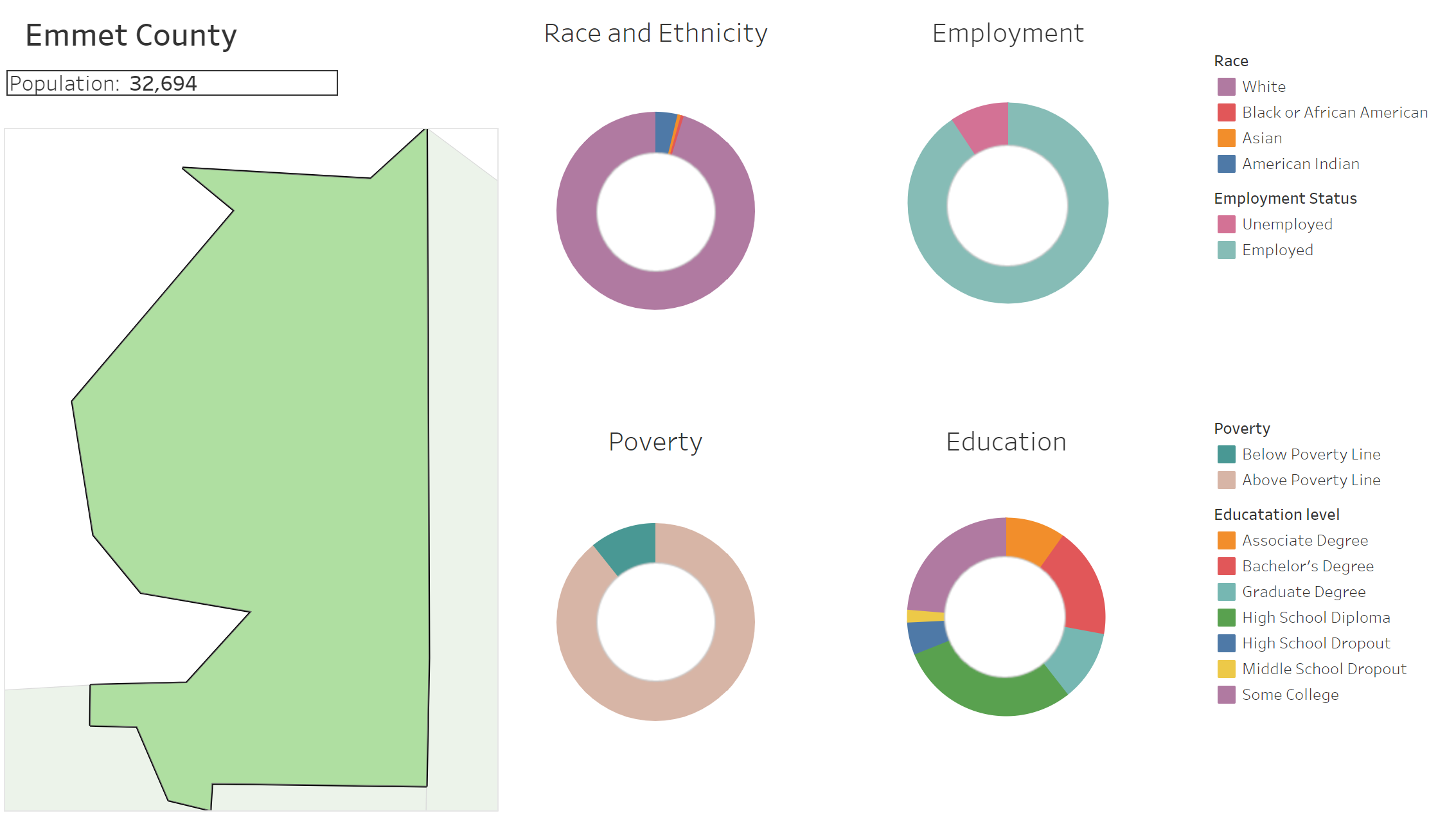
What is the demographic profile (race and ethnicity, employment, poverty, education) of my county?
Why is this Question Important?
The prevalence of substance use varies widely among different demographic groups. For example, certain demographic groups in Michigan have a disproportionately higher frequency of drug overdose deaths. American Indian, Black, and Hispanic Michigan residents have disproportionately higher drug overdose mortality rates than white residents. Michigan residents aged 25-55 constitute > 70 percent of drug overdose deaths while comprising < 50 percent of the Michigan population aged 12 years and older. The highest overdose mortality rates were observed among men for ages 25-44 and among women for ages 25-54.
The 2018 MDHHS Overdose Equity Report provides a deep dive into key demographic trends throughout the State of Michigan.
Academic Detailer Tips
Academic detailers should be informed that overdoses and substance use disorder do not affect all population groups equally. Mental health, healthy coping behaviors, and substance use are influenced by individual, societal and historical factors. Poverty, racism, classism, genetics, medical conditions, adverse childhood experiences, and historical trauma can all have significant effects on a person’s vulnerability to drug-related harms.
Academic detailers are well-positioned to address issues related to health equity. Health equity is defined as everyone having “the opportunity to attain their highest level of health” and no one being “disadvantaged from achieving this potential because of social position or other socially determined circumstances.” Health disparities refer to differences that exist between and within populations in terms of health outcomes and underlying determinants of health that prevent health equity from being achieved. Health disparities are the result of underlying health inequities.
Michigan Substance Use Disorder Data Repository
About this Resource
The Substance Use Disorder Data Repository was created through collaboration with the Office of Recovery Oriented Systems of Care. Data has been collected from a variety of platforms to offer users easy access to Michigan specific data. It is the hope that through the data provided on this site, users will have the ability to make informed programming related decisions.
Tutorial
Example Output
Technical Note: Community profile data includes the most up-to-date US Census data (2010) for counties across Michigan. Census data includes education attainment, employment status, race/ethnicity, and county-level population data. State-level data and poverty status county data are provided through the 2013-2017 American Community Survey data. Additional Census data can be found here: https://www.census.gov/en.html





